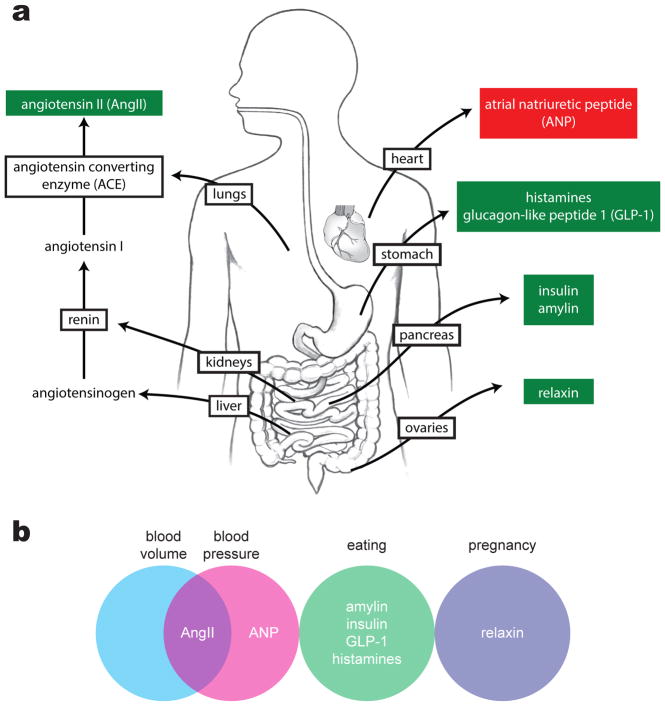Figure 4. Hormonal stimuli for thirst.
(A) The most potent hormonal stimulus for thirst is angiotensin II (AngII), which is generated when the rate-limiting enzyme renin is secreted by the kidneys in response to hypovolemia or hypotension. Other hormonal stimuli for thirst are secreted by the stomach and pancreas during eating, as well as by the ovaries during pregnancy. Atrial natriuretic peptide, a potent inhibitor of thirst, is secreted by the heart in response to hypertension.
(B) The physiological stimuli that induce secretion of thirst-related hormones include changes in plasma volume and pressure, as well as eating and pregnancy. Decreases in blood volume and pressure increase levels of the dipsogenic hormone AngII, whereas increases in blood volume increase levels of the thirst-inhibiting hormone ANP.

